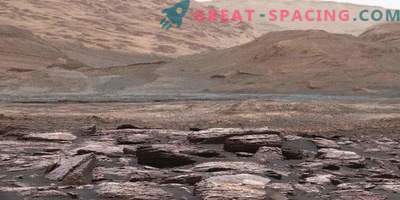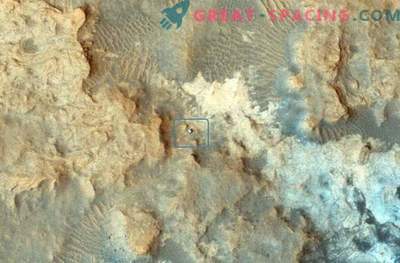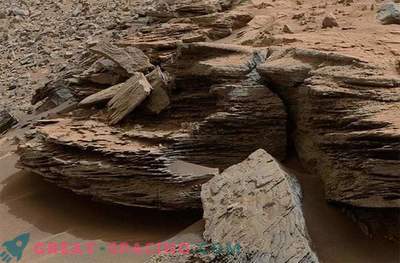
For the first time in its mission in order to better understand the conditions of life on the Red Planet, NASA's Curiosity rover discovered a mineral drilled from Martian rock that complies with NASA's Mars Reconnaissance Orbiter (MRO) orbital data.
The hematite mineral was discovered with the MRO's CRISM tool (Compact Spectrometer for Mars Exploration) in 2010, that is, two years before the landing site for the Curiosity rover was chosen. Inside the crater of Gale, where the scientists of the mission finally decided to deploy Curiosity, hematite was discovered. This was one of the reasons why the mission studies geology there.
"This connects us to a mineral analysis conducted in orbit, which will help us in our research," said Curiosity project scientist John Grozinger from Caltech in Pasadena, California.
Detecting hematite using the on-board chemical laboratory Curiosity (the tool of the Chemistry and Mineralogy), combining them with orbital geological research, will help us better understand the environmental conditions.
"Now, we have reached that part of the crater, about which we have mineralogical information, which was important when choosing a site for a potential Curiosity landing," said Ralph Milliken of Brown University, Providence, Rhode Island, who is a member of the Curiosity scientific group. "Now we are on the way, when orbital data will help us help us predict what minerals we will find and make the right choice as to where to drill." Hematite is formed when another mineral, magnetite, is exposed to oxidizing conditions. This occurs when the mineral is exposed to the atmosphere and water on Mars. Interestingly, this tiny sample, collected by the MRO's CRISM instrument, contains magnetite, hematite and olivine, which are obtained during the oxidation process.
This rock sample was drilled in a place called “Confidence Hills” located on Sharpe Mountain in the outcrop called “Pahrump Hills”. The drilled sample got into the compartment of the onboard chemical laboratory Curiosity, which uses X-ray diffraction to determine the chemical imprint of minerals in the rock.

This parallel comparison shows an X-ray diffraction pattern of two different samples taken from rocks on Mars by NASA's Curiosity rover.
During the first year of the Curiosity mission, the rover spent most of its time exploring samples from the Yellowknife Gulf region, located on a plain near the foot of Mount Sharp. Specimens of rocks from Yellowknife Bay differ markedly from specimens obtained from Mount Sharp, thereby suggesting that they had different environmental conditions. In Yellowknife Bay, which is a remnant of an ancient lake, a large amount of clay minerals were discovered that were not found with the MRO's CRISM tool. They were not detected from orbit because there was a surface layer of dust that covered the rocky surface, dimming the signal. The discovery of clay on the surface of Mars is a very important fact, as this is another evidence that Mars, when it was wetter than it is now. The fact that water was once present on the surface reinforces the possibility that there was a primitive life on Mars.
The study of these minerals at the base of Mount Sharp is a key step in understanding the degree of oxidation in the distant past of Mars. NASA's Opportunity Mars Rover, which has investigated the Plateau of Meridian since 2004, also detected the presence of hematite.
This latest discovery underscores the need for operations on the surface of Mars, if we want to truly understand the habitability of the past of the Red Planet.











































